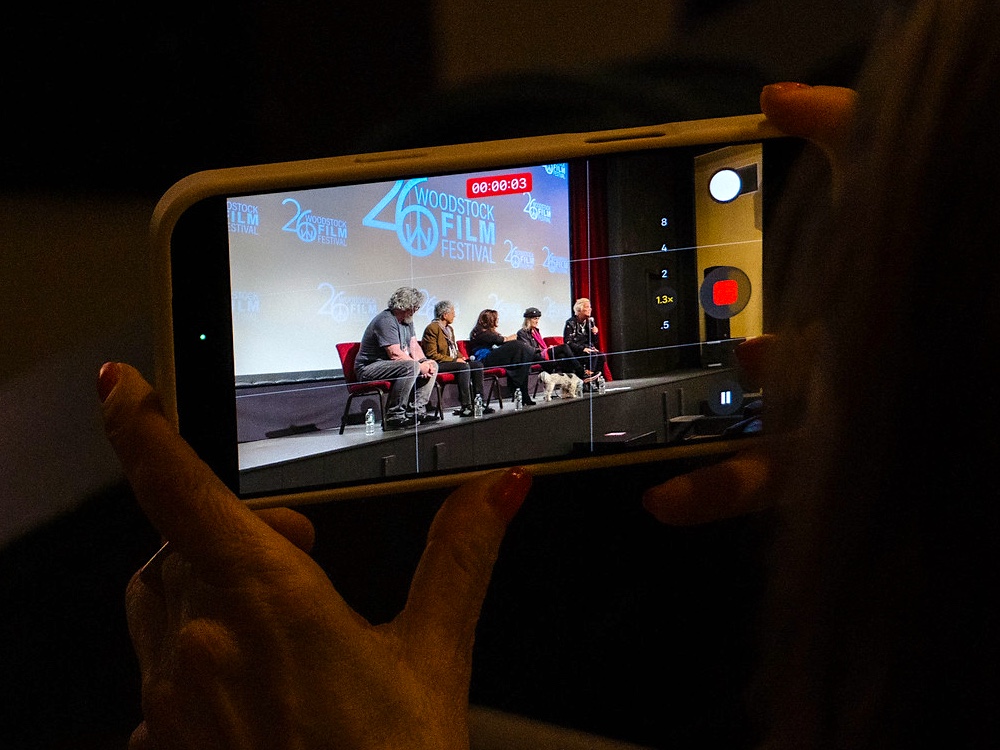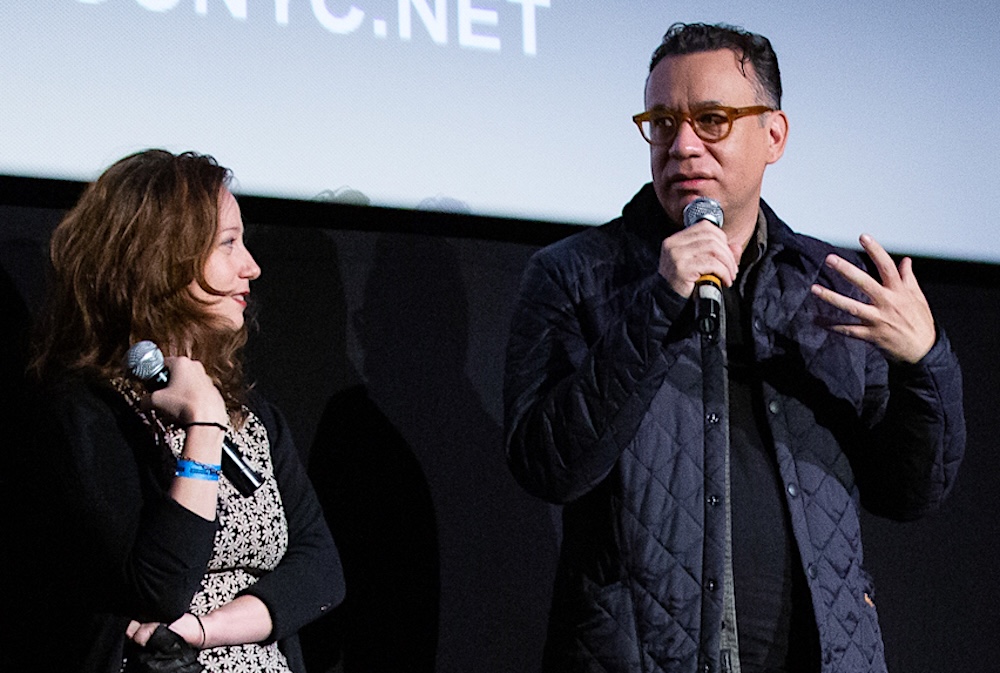
2024 Woodstock Film Festival: A Conversation with Film Director, Marian Quinn
INSIDE+OUT is Upstate NY with director and writer Marian Quinn to discuss her film, TWIG, which will be shown at this year’s 25th Annual Woodstock Film Festival. Even just watching the trailer of TWIG raises the hair on the back of your neck. As a modern-day adaptation of the ancient Greek tragedy Antigone, it is a powerful tale that sheds light on inner-city life in Dublin, the constraints of the class system, and the power of family ties in a reality plagued by drugs and violence. It’s a moving love story with a Romeo and Juliet-like theme, and its main character, Twig, is a black Dubliner who won’t back down. The character says, “Why would you let your fear stop you from doing what’s right?” Indeed.
You can see this inspiring film at the upcoming Woodstock Film Festival and follow Mary on Instagram: @mariantheresequinn + @twig.film
Now in its 25th year, 2024 promises to be as exciting as ever! | October 15 to October 20, 2024
Check out the 2024 Woodstock Film Festival Schedule | Get Your Tickets HERE.
In the meantime, read our Exclusive Interview to learn more about Marian Quinn’s journey in filmaking.

INSIDE+OUT: Tell us about your film at this year’s Woodstock Film Festival.
Marian Quinn: TWIG is an adaptation of the ancient Greek tragedy Antigone. It is the original tale of the girl who speaks truth to power. My Antigone, Twig, is set, slightly out of time, in Dublin’s ancient inner city. A gangland feud rages, creating a culture of containment and fear that pervades the community. Twig yearns to escape with her lover, Eamon, but the deadly shootout between her brothers, Paulie and Eddie, results in the local crime lord, Leon, vowing to leave Paulie’s body to rot in the street. Twig refuses to bow down to his edict, thanks to her determination to do what’s right and Leon’s desire to maintain control seals both of their fates. The scene is set for a tragic showdown in Dublin’s docklands.
What does it mean for you to be included in the Woodstock Film Festival and how often do you participate in festivals?
It’s an honor to return to the Woodstock Film Festival with my second feature film. I was here in 2008 with 32A, and I loved the spirit of the festival, especially meeting all the other filmmakers and connecting with audiences at the screenings. To me, the Woodstock Film Festival represents independent cinema and unique voices, which I’ve always been a part of, going back to my days in Brooklyn. I love how the local community intersects with the industry that makes the trip up to Woodstock from the city. Plus, two of my favorite collaborators on TWIG live in the Hudson Valley, cinematographer Declan Quinn and composer Gerry Leonard. It is lovely to be able to screen the film with them here.
I attend several film festivals yearly, from the Dublin International Film Festival, Cannes, Berlinale, and the Galway Film Fleadh. In this time of diminishing theatrical distribution, they are more important than ever. Sometimes, festivals are the only opportunity to see films on a large screen before they are streamed. I love to pack my days with films if I can and return home with my head full of all the wild and diverse stories I have seen. The other reason filmmakers go to festivals is the funding markets, particularly in Europe, which is a crucial step in raising finance for films.
Woodstock Film Festival has authenticity, which is part of its charm. Even the top film festivals are struggling with audience numbers these days; the glitzy red carpets and press they attract help justify their existence. As an alternative, it is so refreshing to have WFF, which is as important to the independent film community in NYC as it is to the supportive and enthusiastic audiences in the Hudson Valley—a gathering of the tribe.

What inspired you to choose a career in the film business, and what was your journey?
I started out acting in theater and independent film. While I love acting, I got impatient, waiting for opportunities to tell stories of amazing women. I realized that I probably had wanted to write and direct all along but had not given myself permission. I started with a short film made with a large cast of friends when I lived in Brooklyn called Come To. At the same time, I was developing my first feature, a coming-of-age film, 32A, about four 13-year-old girls set in Dublin in 1979. We premiered 32A at the Berlinale and attended many festivals around the world, including the wonderful Woodstock. I also teach screenwriting and have been very active in the film industry in Ireland. I’ve been a board member of Screen Ireland for many years, working to improve access across gender equality, diversity and inclusion.
What was the biggest challenge in making this film?
Probably the budget. All films in Ireland are low-budget, with the result of each feeling like a minor miracle when you pull it off. We shot for 24 days during the pandemic, which meant we were testing and adhering to protocols, making things even more difficult. The cast was terrific, which helped working at that speed. Declan, being my cinematographer, key collaborator, and brother, was crucial in getting the film shot in such a short amount of time. Even with little resources and time, he was able to bring his signature luminosity to the film.
Why is it essential to tell the story of a Black Irish Woman, especially in today’s world?
Our star, Sade Malone, blew us away at her first audition. We were looking for authentic Dublin actors as this film is set in Dublin’s inner city, and we were open to any ethnicity. We knew that authenticity, the working-class accent, was important when putting together this cast. When we cast Sade, we made sure to cast her siblings of similar ethnicity. Sade and the other actors playing her siblings identify as mixed race, mostly of Irish and Caribbean or African descent. They are all Dubs, which was important, and they speak with beautiful Dublin accents.
The fact that they are black represents Ireland as it is today. There was a lot of consultation with Sade and the rest of the cast as to the representation of their ethnicity. They were happy to be cast as Irish characters who happened to be black. None of them had ever been cast as anyone other than the sole mixed-race character in a film, which made the family element very meaningful to Sade, Ghaliah, Jade, Justin, and Kwaku and, honestly, eye-opening for the rest of us working on the film. The Irish film industry is changing, albeit slowly.
Why is the story being set in Dublin important? Does Ireland’s history impact the intentions of this film?
Dublin’s inner city, much like West Baltimore depicted in The Wire, has been left aside. The class system is very much intact, and opportunities are scarce. And yet the women are strong and they endure. With little access to higher education, the lure of the drug trade is strong, particularly for young men.
The wars, whether so-called legitimate or not, draw the young men to battle, and the women are left at home to pick up the pieces. The mothers, the sisters, the wives, and the daughters have to bury the dead and grieve.
In an era of rising fear and division, how might this film inspire solidarity and collective action, if at all?
I think the enduring appeal of the tragedies is to examine our human flaws: blind ambition, greed, corruption of absolute power, and the cyclical nature of war and its effects. Within all that, there is a plea for us to see and a hope that maybe we won’t repeat it all over again.
Over 2,500 years ago, Sophocles and Aristophanes were anti-war. I believe they wanted us to see the futility of it. In the US, on the eve of a most consequential election, it is probably more important than ever that we remember what happens when absolute power is given to one man. I personally thought that we had moved on, that after World War II, democracy was a given. But here we are again.
In the words of Leonard Cohen, sung beautifully by Susan McKeown in the film, “Oh the wars they will be fought again and the holy dove, she will be caught again. Bought and sold and bought again, the dove is never free.” But the song ends, as the film does, with the hopeful promise, “There is a crack, a crack in everything; that’s how the light gets in.”


What is it like being a female director in a male-dominated industry? Do you have any advice for other women trying to succeed in this industry?
So much to be said on this topic, but for now, I’ll talk about the work as my male contemporaries are allowed to do.
How have the mainstream media and film industry responded to your film?
Too early to say yet.
Greatest surprise making the film?
The audience reactions at the festival screenings I have attended so far, particularly young people, surprised me. People who I would have thought would have had no interest were really invested in the tale. And young people really went for it. The young audiences had no issue with the theatrical voice within it. They loved the Romeo and Juliet love sub-story and were at home with the tragedy overall. It has appealed to a lot more people than I would have thought.
Do you want to share about any upcoming projects?
Another film is about death and dying. I am Irish, after all, and we seem to be very comfortable with the subject of death. But this one is more comedic; it’s a love story.
+ + +
About Marian Quinn
Marian Quinn is a writer-director. Her multi-award-winning first feature, 32A, premiered at the Berlinale, sold worldwide, and has toured to over 100 festivals, including Woodstock. Twig is her second feature; it opened the Dublin International Film Festival with a cinema release in Ireland this summer. From acting to writing and directing, including curation and distribution, Marian has worked in many facets of the industry in both New York and Ireland. She was a board member of Screen Ireland for six years. She teaches screenwriting at ATU, Sligo.
About the Woodstock Film Festival

Founded in 2000, the Woodstock Film Festival (WFF) is a not-for-profit 501(c)(3) organization that nurtures and supports emerging and established filmmakers, sharing their creative voices through an annual festival and year-round programming to promote culture, diversity, community, educational opportunities, and economic growth.
WFF provides innovative mentoring and inspired educational programs benefitting filmmakers, students, and diverse audiences while serving as a powerful cultural and economic engine for New York’s Hudson Valley and beyond. Such efforts have consistently resulted in the festival being hailed as one of the top regional film festivals worldwide. The Woodstock Film Festival is an Oscar®-qualifying festival in the short film categories – Live Action Short Film, Animated Short Film, and Documentary Short Film.
+ + +
Now in its 25th year, 2024 promises to be as exciting as ever! 2024 Lineup and Tickets HERE.
Full and Weekend Festival Passes are available – Get Your Festival Deluxe Passes HERE
Here is a link to the 2024 Film Festival Schedule
Write a Comment
You must be logged in to post a comment.









